

Often featuring complex imagery and ambitious in their scale and intricacy, they were sought after by the greatest art patrons and were exported to Scandinavia and Central Europe. During the middle ages, embroidery was arguably the art form England was best known for. Relics, robes and copes are amongst the treasures displayed at the new Opus Anglicanum exhibition that brings together elaborate works of textile decoration, some of which have survived for over 700 years.
This is an exhibition that opens up a world of pattern and decoration and celebrates the achievements of a very particular art form. As supporters of this incredibly special exhibition, Hand & Lock were excited to see it brought to life. While the exhibition is an informative history lesson, excitement can be found in the details and we have highlighted a few pieces that are not to be missed.
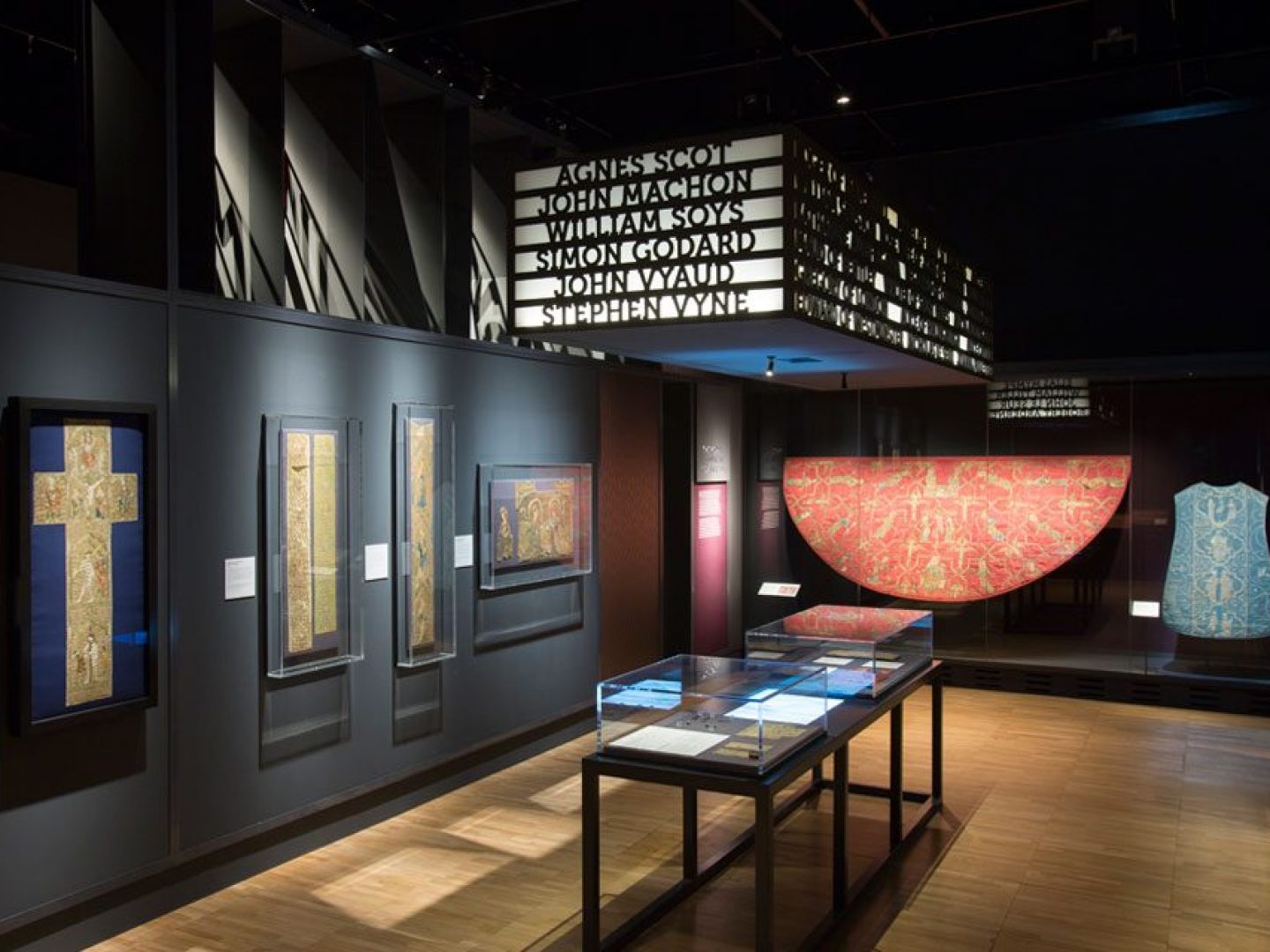
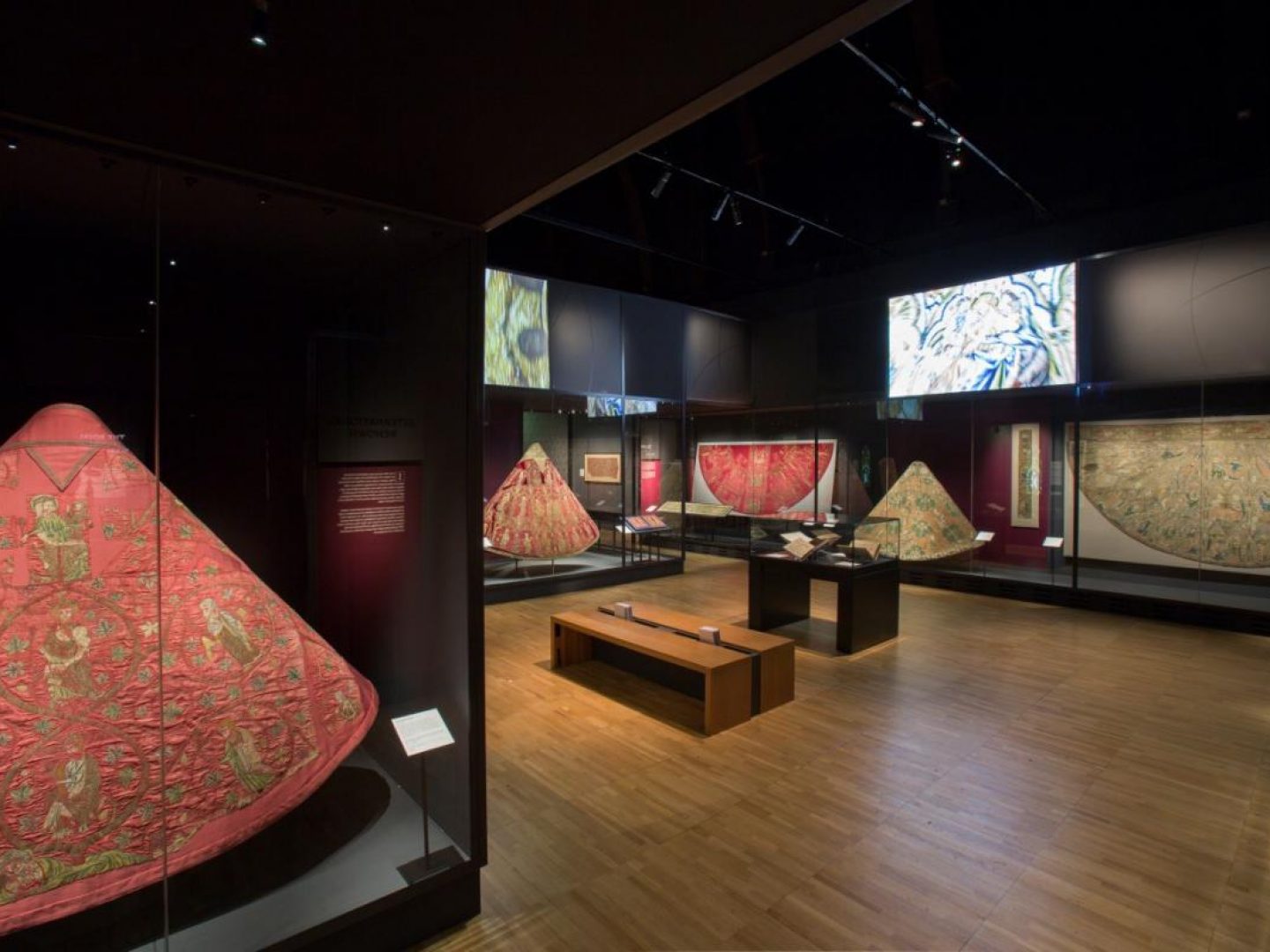
The Scandinavian Link– An Amice apparel, stole and maniple on loan from the Reykjavik Museum in Iceland is a worth a mention. Two Icelandic bishop saints are among the figures depicted. Notwithstanding this specific Icelandic connection, the technical and stylistic features are characteristically English, making this an incredibly unique piece of Opus Anglicanum as English embroidery rarely featured foreign depictions.
The Vatican Cope – The palace at Westminster increasingly became the centre of court life for England’s royalty. Artistic patronage both at the palace and westminster abbey brought a new style to english art. A great depiction of the achievement of the development of english art is The Vatican Cope. Embroidered with gilded silver and silver thread and coloured silks, the Vatican Cope is a stunning piece. It is one of the first objects that can be seen upon exiting the Sistine Chapel in the Vatican City however it is often overlooked as visitors are still in awe of Michelangelo and the beauty of the Sistine Chapel. This exhibit provides the cope with the opportunity to shine on its own.
The Toledo Cope – The next section is populated by a whole series of masterpieces. The masterpieces were created in the first half of the 14th century and this is when embroidery reached the height of its ambition and where the greatest masterpieces were created. A key piece is a cope from Toledo Cathedral which has never travelled outside of spain since its creation. One of the least well known of the most important pieces, it is an interesting object because of the detail and the naturalistic representation of recognisable species of birds.
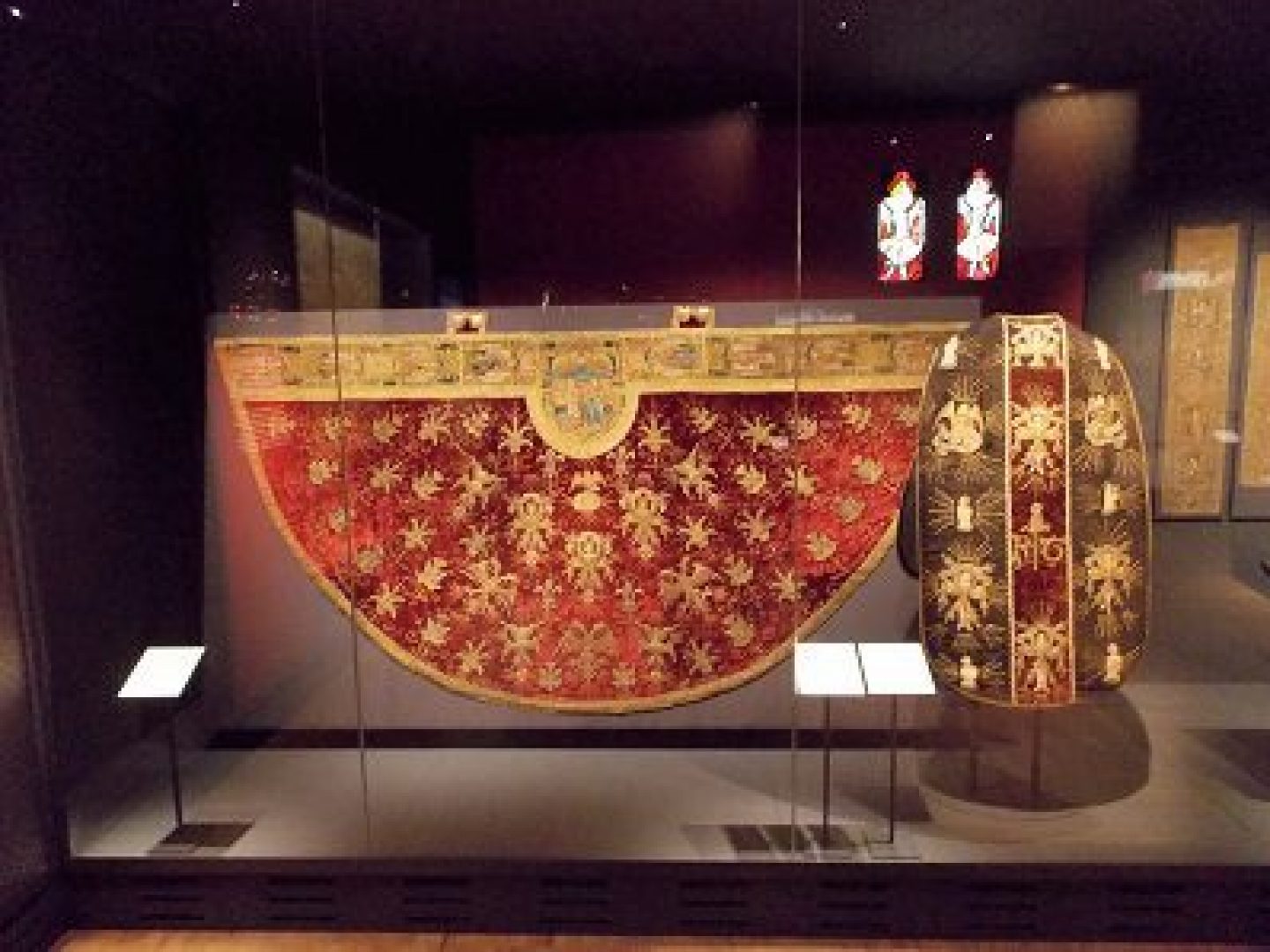
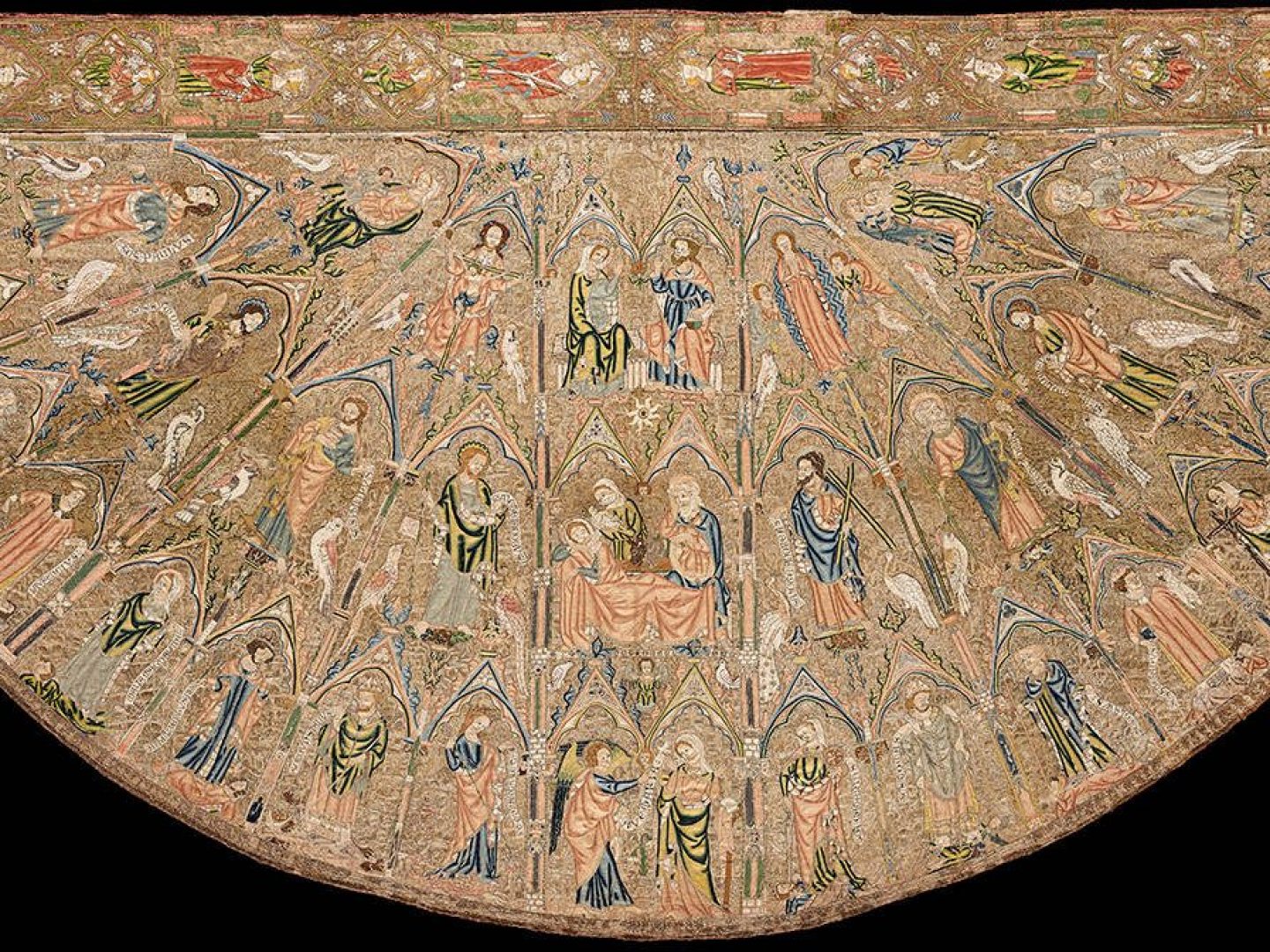
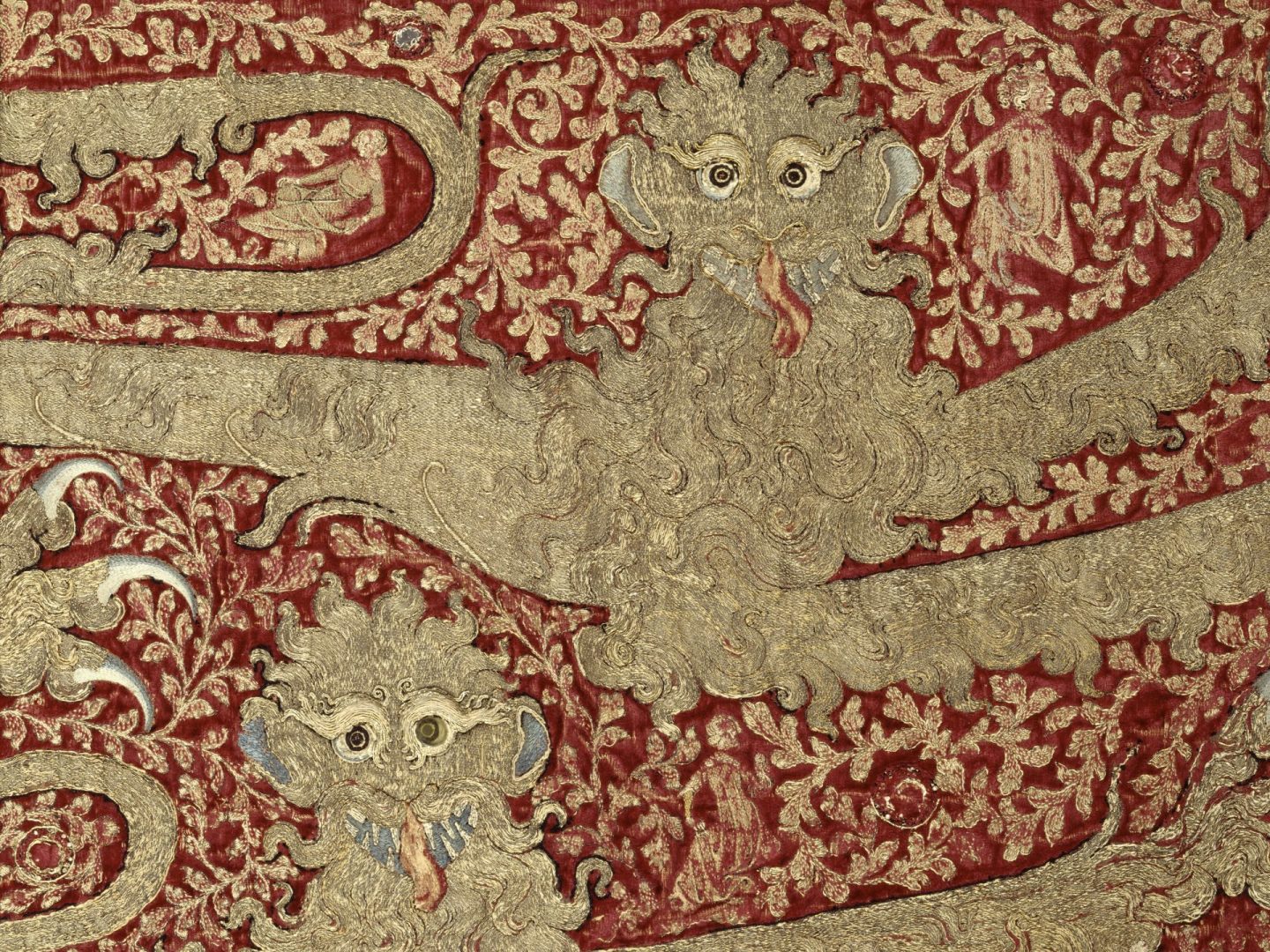
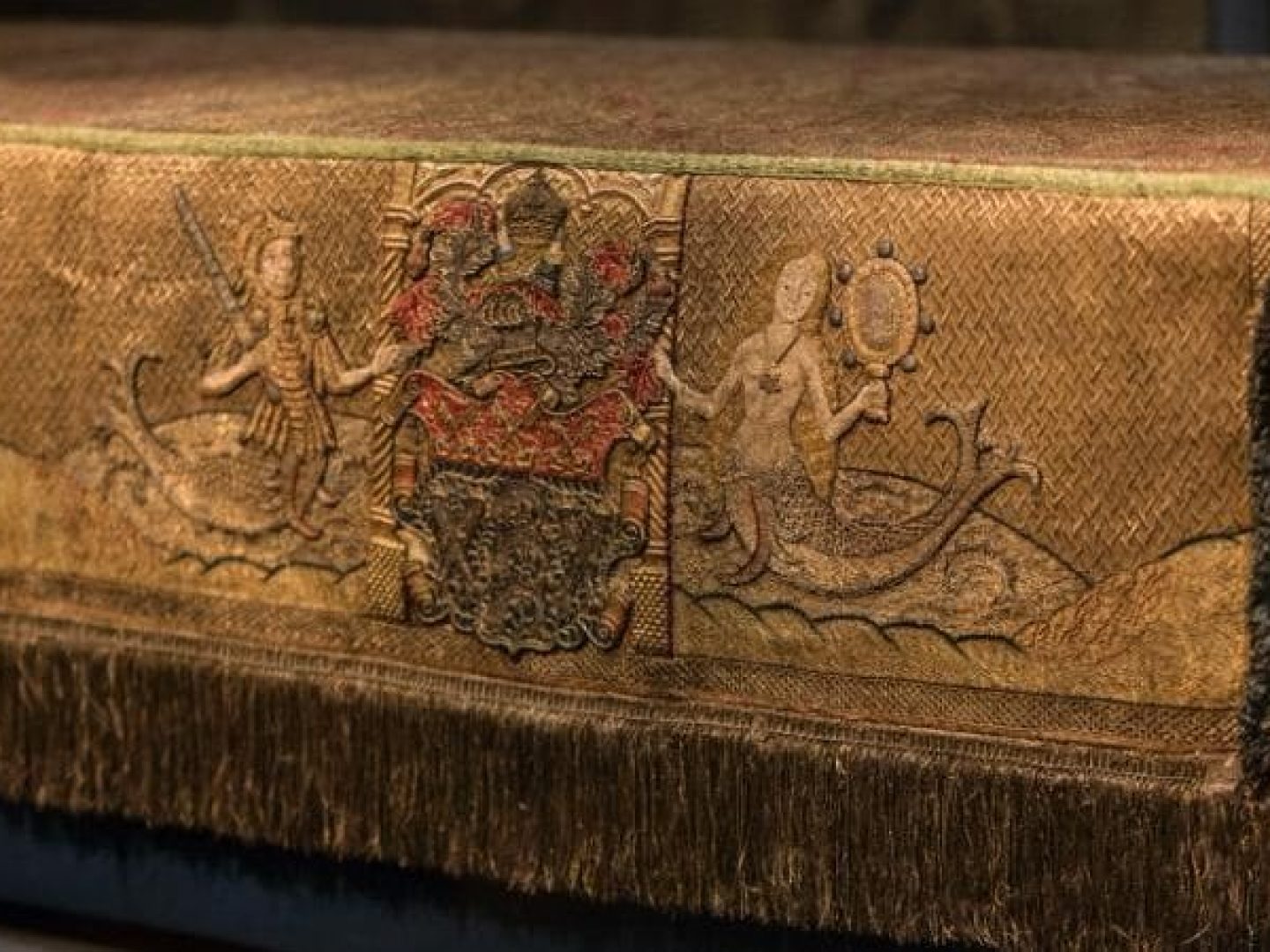
Part of a Horse Trapper – One of the largest surviving fragments of medieval heraldic covers for a horse, this textile represents two lions of the royal arms of England prior to 1340 and may have been made for King Edward the Third. Embroidered with gilded silver and silver thread as well as a silk velvet ground makes this piece an impressive royal display.
The Fishmongers Pall – The last object on display is a funeral pall- a cover for a coffin which was once owned by the fishmongers company. Considered one of the grandest pieces owned by the Company, its decoration includes mermen and mermaids, the coat of arms and St Peter the patron saint of fisherman. A detail to admire is that of the mermaid admiring herself in the mirror and her reflection embroidered in the mirror.
The relatively small but beautiful collection takes you on a chronological journey through the history of the art form and is enhanced by specially commissioned video displays which provides an introduction to the making process and an understanding of the techniques used. Walking through the exhibition, we found joy in the intricate patterns and playful characters featured on the ancient swathes of silk and velvet and discovered captivating secrets, intriguing trivia and remarkable stories, making this exhibition an exploration into a world rich in art history.
